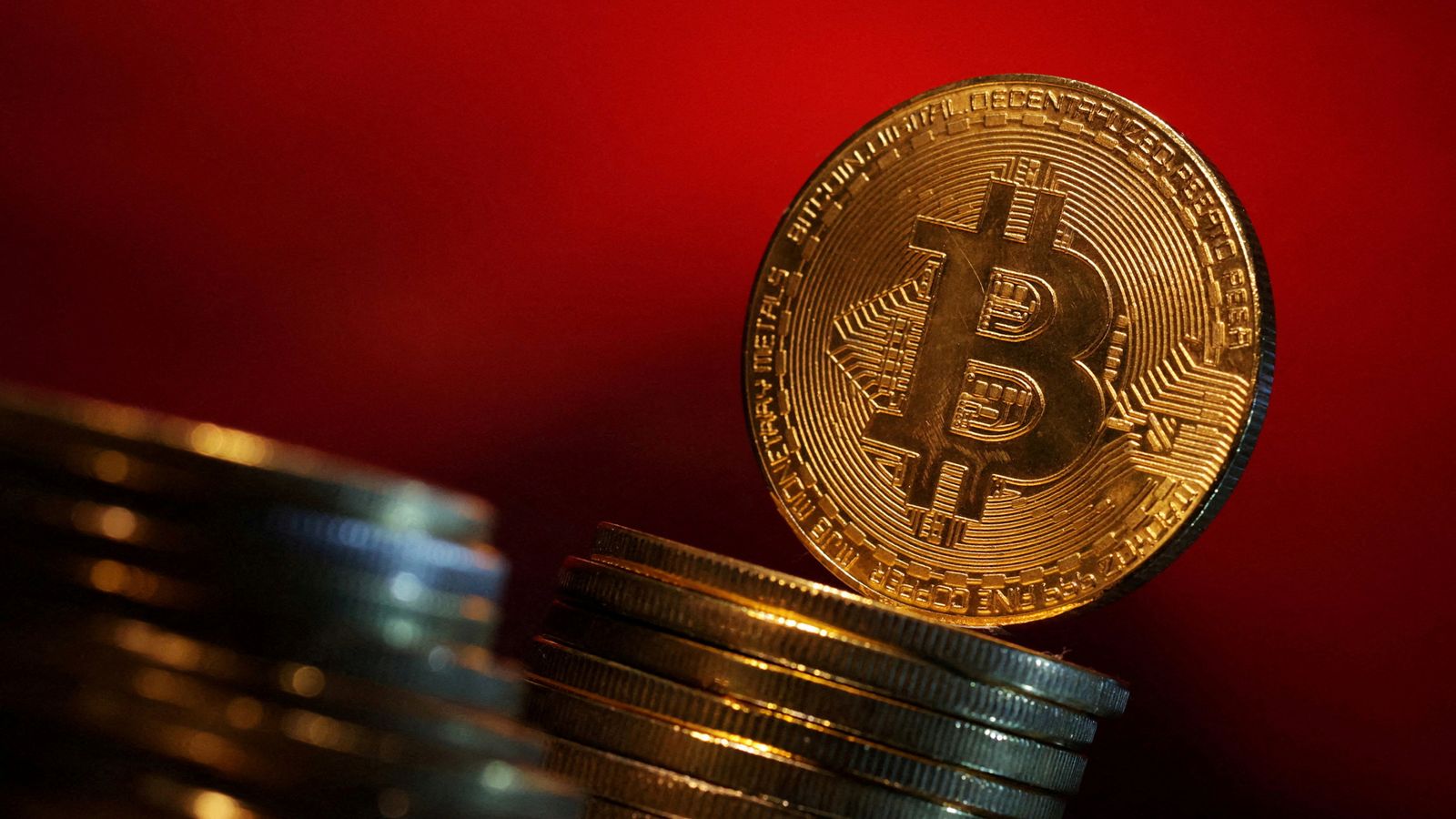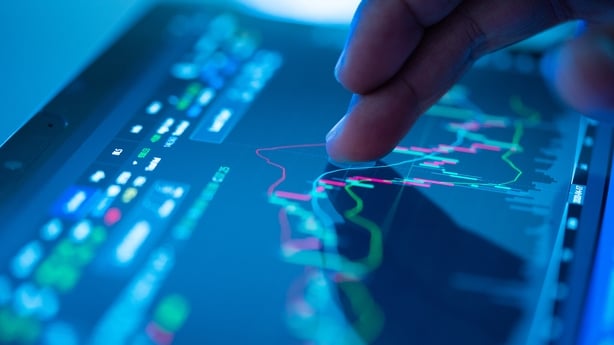Economy
Buckle up! There could be more market volatility ahead
Stock market moves are often spoken of in the context of a rollercoaster ride.
If the analogy was real, investors would have had white knuckles by the end of January.
As they entered the new year, they approached the summit of the ride with global markets sitting at close to all-time highs; the US markets actually hit a record in the opening days of 2022.
And it had been a pretty spectacular climb from March of 2020 when a sell off knocked about a third off the value of indexes globally.
Barring a few dips here and there, the movement has been pretty much in one general direction.
But like all the best rollercoasters, there was an adrenalin-surging twist waiting around the corner.
Inflation January
In the space of days, stocks went from all-time highs to plumping quite perilously.
« Under normal circumstances, we could put the skittish investor sentiment down to the lingering effects of a post-festive season full of excessive merriment, » Aidan Donnelly, Head of Equities with Davy explained.
But there was something different about this time.
It started off as a sell-off in very high growth, non-profitable companies, but that spread to wider segments of the market, giving the Nasdaq (technology heavy index) its worst start to the year since the financial crash over a decade ago , Mr Donnelly pointed out.
« If Anchorman Ron Burgundy was reporting on the market action since the beginning of the year, he would surely sum it up with his phrase « Well, that escalated quickly! ».
So, what caused such an abrupt about turn?
In short, the topic that’s likely going to dominate economic and market commentary for much of this year – inflation, or to put it more plainly, the rising cost of living.
The guiding principle for central banks is that they like to keep inflation at or, preferably, just below 2%.
It’s currently running at a rate of over 5% in most major growth.
The main lever for controlling that is interest rates. If prices are rising at a pace that’s considered too hot, rates can be hiked to try to take a bit of heat out of the economy.
And that’s an issue that Central Banks – and indeed stock markets – haven’t had to contend with for many years.
In fact, with rates at close to zero and billions of being pumped into the system in the form of bond purchases, there was a plentiful supply of cheap money sloshing around the system.
And stocks were among the biggest beneficiaries of that largesse.
« The Fed (the equivalent of the US Central Bank) is faced with historically tight labor markets and too high inflation, and while his predecessors had the luxury of factoring in the impact of stock market volatility on the financial conditions of consumers, Jerome Powell ( Fed chair) is more than aware that the market tail can’t wag the monetary policy dog this time, » Aidan Donnelly explained.
To put it another way, the market is not going to be factored into the Fed’s decision making and investors can have as many tantrums as they like.

up the recent moves quite succinctly
Tech stock carnage
Stocks in the technology sector, those that performed incredibly strongly throughout the pandemic, have borne the brunt of the selling.
They had wavered before as reopened from different phases of lockdown and the ‘stay at home’ factor driving their gains was seen to have waned, but the stock prices managed to continue to rebound.
The wider tech sector is viewed as being particularly sensitive to interest rate rises, partly because they tend to have high debts – which will be impacted by higher potential interest rates – but also by the impact on the growth that’s expected from these companies – and is very often baked into their share prices.
« We were expecting volatility to pick up and it has not disappointed, » Paul Sommerville of Sommerville Advisory Markets said.
« In simple terms we can see the interest rate sensitive and very highly valued frothy end of the market is suffering, » he explained.
He summed up the extent of the hit to markets in January.
By the end of the month, the S&P 500 – a broad index of the top 500 stocks in the US – had suffered a bigger drawdown in 2022 than it had in all of 2021.
It slipped briefly into correction territory at one point – defined as a fall of more than 10% from its all-time high – along with the Nasdaq (which is mainly made up of tech stocks).
The Russell 2000 index of small cap stocks fared even worse with a 17% decline.
« The Nasdaq gave up 6 months gains in 3 weeks, » he explained.
« The FAANGS are coming off the boil. »
These are the group of the biggest tech stocks – Facebook (Meta), Apple, Amazon, Netflix, Google (Alphabet).
If January was bad, worse was to come as February rolled around.
Meta Disaster
Much like January, February started off with what appears to have been something of a false dawn.
Stocks settled somewhat as quarterly results provided some direction and calm.
Some of the tech names managed to pull back some of the losses that had been wracked up in the previous weeks.
Then Facebook – or Meta, as it’s now known – published its latest quarterly results in the middle of this week.
To say that they disappointed would be an understatement.
The selloff resumed, initially with Meta and then it spread throughout the wider market.
« Meta shares plummeted 26%, equivalent to more than $200 billion of its market capitalisation. In terms of value, that was the largest ever single day fall by a US company, » Richard Hunter, Head of Markets at interactive investor explained, by way of context.
« It is becoming evident that not only does sentiment remain fragile, but earnings misses are being severely punished, » he added.
Paul Sommerville said the move was more deep-seated than just one set of results.
« There was no bounce at all, and the stock closed on the low of the day. This point is important as it points not to a ‘blip’ in the earnings but a fundamental re-rating of the stock price, » he explained.
However, he cautioned against further panic reactions.
« The atmosphere in the markets is frantic and feverish so it is important to look at it calmly and rationally, » he advised.
Amazon to the rescue?
Online retailer Amazon provided some calm to the situation when it reported numbers on Thursday night.
Shares soared 17% after the bell with Snap and Pinterest providing some reassuring stability too.
However, Paul Sommerville said this too had to be put in context.
« Amazon stock was down 16% over a year, before the results. It was down 18.5% in 2022 before Friday. Even after the results Amazon is still down for 2022. »
He said how it performs in the near term would be an important indicator for the overall market.
« Any failure of the rally by the end of the day (Friday) would be another blow to the confidence of the ‘buy the dip’ mentality that is so ubiquitous.
« Where they close could have a major bearing on the price action for the coming weeks. Keep an eye on Amazon, » he advised.
By close of business on Friday, Amazon stock was around 13% higher at over $3,155 a share.
The overall Nasdaq closed just over 1.5% higher signaling some stability for now.
Does this matter to anyone other than rollercoasting investors?
Many people took up the practice of ‘day trading’ in the last two years, particularly in the early days of the pandemic, with millions buying shares on a host of new trading apps.
There was one infamous trader who recorded his trading exploits online, randomly choosing stocks corresponding to letters he pulled out of a bag, so confident was he that stocks only went up.
That narrative has changed somewhat in recent weeks with many carrying tech heavy positions now potentially nursing significant losses.
In addition, anyone who contributes to a DC (defined contribution) pension scheme (which is most working people who have pensions now) likely has quite a big exposure to stock markets.
Given that these investments are made for the long term, it’s generally advised to sit still and ride out periods of volatility and heavy selling.
For those coming closer to retirement, they should have started to reduce their exposure to more volatile parts of the market already.
Where to now?
The path ahead will likely be dictated by a combination of company performance and Central Bank moves.
With the Bank of England already having hiked interest rates twice in the past two months, the US Federal Reserve is set to follow course with possibly as many as five interest rate hikes this year.
The European Central Bank – having previously all but ruled out any rate rises this year – now appears to be shifting its stance with President Christine Lagarde declining on Thursday to give any guarantee that rates would not rise in 2022.
The inflation situation is fast moving, effectively forcing the hand of Central Bankers.
And market traders are at their mercy.
There are a few more twists to come on this rollercoaster. Buckle up!

« Spécialiste de la télévision sans vergogne. Pionnier des zombies inconditionnels. Résolveur de problèmes d’une humilité exaspérante. »
Economy
Le prochain événement de « réduction de moitié » du Bitcoin aura lieu Actualités scientifiques et technologiques

Les réductions de moitié précédentes ont généré d'importants gains en cours de route, mais les analystes préviennent que cela ne signifie pas automatiquement que la même chose se produira cette fois-ci.
par Dan Cairns, journaliste
Samedi 20 avril 2024 à 03h45, heure du Royaume-Uni
Un événement rare de réduction de moitié du Bitcoin s’est produit, selon la société d’analyse de crypto-monnaie CoinGecko.
Cela réduit le nombre de nouveaux Bitcoin Entrer sur le marché en réduisant de 50 % les récompenses reçues par les mineurs de Bitcoin.
La conférence a lieu environ tous les quatre ans et vise à limiter l'offre à 21 millions d'ici 2140.
Cela signifie que seuls 450 Bitcoins seront désormais créés chaque jour.
Des réductions de moitié ont également eu lieu en 2012, 2016 et 2020 – le mécanisme a été écrit dans le code de Bitcoin lors de sa création initiale.
Le prix de la crypto-monnaie est resté stable à 63 747 $ (51 531 £) après la réduction de moitié, les analystes affirmant que l'événement attendu avait déjà été intégré dans le prix.
Les investisseurs espèrent qu’une forte augmentation n’est pas si loin, après que la précédente réduction de moitié ait finalement conduit à des gains importants.
Le prix lors de la réduction de moitié en mai 2020 était d'environ 8 600 dollars, mais un an plus tard, il est passé à plus de 56 000 dollars.
Andrew O'Neill, expert en crypto-monnaie chez S&P Global, s'est dit « quelque peu sceptique quant aux leçons qui peuvent être tirées en termes de prévision des prix des réductions de moitié précédentes ».
« Ce n'est qu'un facteur parmi tant d'autres qui peuvent influencer les prix », a déclaré O'Neill.
Bitcoin Il a atteint un nouveau sommet de 73 803 $ (59 661 £) en mars. Après une hausse de 175 % au cours des 12 derniers mois.
Sa légitimité a également été renforcée en janvier lorsque les ETF contenant du Bitcoin ont été autorisés à être négociés sur une bourse américaine.
En savoir plus:
Pourquoi Bitcoin a-t-il subi une forte baisse par rapport à des niveaux records ?
C’est l’informaticien, et non le mystérieux inventeur du Bitcoin, qui fait la loi
Le secteur financier traditionnel considère traditionnellement le Bitcoin comme étant extrêmement risqué et vulnérable aux fluctuations de prix importantes et imprévisibles.
Le gouverneur de la Banque d’Angleterre, Andrew Bailey, a mis en garde à ce sujet en 2021 Monnaies numériques Il n’a aucune « valeur intrinsèque » et les investisseurs doivent être « prêts à perdre tout leur argent ».
Il a également déclaré aux députés en janvier que les crypto-monnaies sont « largement inefficaces » et « ne décollent toujours pas en tant que service financier essentiel ».
Plus de 19,5 millions de Bitcoins ont été extraits jusqu’à présent, ce qui n’en laisse que 1,5 million exploitables au cours des 116 prochaines années.
La réduction de moitié se produit tous les 210 000 « blocs », ce qui se produit généralement tous les quatre ans environ.

« Spécialiste de la télévision sans vergogne. Pionnier des zombies inconditionnels. Résolveur de problèmes d’une humilité exaspérante. »
Economy
Propriété de Mount Juliet en vente pour 45 millions d'euros en tant qu'hôtel et complexe de golf – The Irish Times
:quality(70):focal(683x341:693x351)/cloudfront-eu-central-1.images.arcpublishing.com/irishtimes/OQLZ3WLOR46YUKFNSBHLSDHAXA.jpg)
Tetrarch Capital est sur le point de réaliser un retour sur investissement significatif dans la propriété Mount Juliet à Kilkenny. Après avoir déboursé 15 millions d'euros pour s'assurer la propriété de l'hôtel cinq étoiles et du golf resort en 2014, la société et l'homme d'affaires Emmett O'Neill, copropriétaire de Mount Juliet, l'ont mis en vente au prix indicatif de 45 millions d'euros. .
Dans une lettre envoyée vendredi soir aux membres de Mount Juliet, le directeur de Mount Juliet, Damien Gaffney, a déclaré que les consultants en immobilier commercial JLL Ireland avaient été nommés pour « explorer le marché et gérer la vente ».
Commentant la gestion par Tetrarch de l'hôtel de 125 chambres, du restaurant étoilé Michelin Lady Helen, du parcours Jack Nicklaus Signature Design et du domaine plus vaste de 500 acres, il a déclaré que la société avait « investi très financièrement » dans le complexe et qu'elle était « très fière ». . Il a supervisé une transformation si majeure.
M. Gaffney a déclaré que les propriétaires actuels sont « ravis d’organiser deux Irish Open consécutifs en 2021 et 2022 sur notre parcours de golf emblématique Jack Nicklaus pour la première fois depuis le milieu des années 1990 – respectant la promesse que nous avons faite aux membres lors de notre acquisition. le domaine à l’été 2014. »
M. Gaffney a conclu la lettre en disant que même si le processus de vente commencerait immédiatement, « toutes les activités et opérations liées au golf se poursuivront comme d'habitude et les emplois de tous nos employés resteront sûrs et inchangés ».
Le moment de la vente pourrait être opportun car elle intervient dans la mesure où les revenus de la station ont presque doublé pour atteindre 17,6 millions d'euros en 2022, dernière année pour laquelle des comptes consolidés ont été déposés. L'opérateur de la propriété, MJBE Investments 1 Ltd, a renoué avec les bénéfices d'exploitation issus de ces revenus pour enregistrer un bénéfice d'exploitation de 699 520 €, l'organisation de l'Irish Open jouant un rôle important pour attirer des affaires.
Ce bénéfice d'exploitation fait suite à une modeste perte d'exploitation de 10 302 € en 2021, lorsque le site avait également accueilli l'Irish Open 2021.
[ Mount Juliet narrows pretax losses amid Covid closures ]
Les comptes montrent que l'encours des prêts bancaires à fin 2022 s'élevait au total à 13,65 millions d'euros, alors qu'il restait un encours supplémentaire de 24,2 millions d'euros au titre d'un prêt d'actionnaire.
En plus de souligner le retour à la rentabilité et l'organisation de l'Irish Open, les propriétaires de Mount Juliet pourraient également espérer capitaliser sur la publicité positive entourant la récente décision de la BCE d'accueillir une réunion de son conseil d'administration composé de 26 membres. Conseil là-bas en mai.
Contactée pour commentaires, une porte-parole des propriétaires de Mount Juliet a confirmé qu'ils avaient chargé JLL d'envisager de vendre la propriété pour un prix indicatif de 45 millions d'euros. La porte-parole a déclaré que la décision avait été prise après « un certain nombre de communications indésirables récentes » concernant la propriété.

« Spécialiste de la télévision sans vergogne. Pionnier des zombies inconditionnels. Résolveur de problèmes d’une humilité exaspérante. »
Economy
Un homme qui n'a pas droit à un allègement fiscal pour la location d'une maison qu'il a quittée à cause de harcèlement raciste – The Irish Times
:quality(70)/cloudfront-eu-central-1.images.arcpublishing.com/irishtimes/OAM557WQURAFZEKSBP6MYXLHWI.jpg)
La Cour suprême a statué contre un Pakistanais qui tentait de faire valoir son droit à un allègement fiscal pour la location de la maison que lui et sa famille avaient quittée en raison d'allégations de harcèlement raciste de la part de certains résidents locaux.
Cependant, Adnan Ahmed Siddiqui a obtenu partiellement gain de cause devant le tribunal, le juge Oisin Quinn étant d'accord avec lui sur le fait que le commissaire aux appels fiscaux (TAC) avait commis une erreur dans la façon dont il avait considéré un paiement de 85 000 € de son ancien employeur.
Le juge a déclaré que le paiement avait été effectué alors que Siddiqui était en congé de stress et qu'il faisait partie d'un accord de règlement en mars 2014 visant à retirer sa plainte auprès du Tribunal pour l'égalité pour discrimination raciale présumée.
Le Tax Appeals Commissioner (TAC) a demandé au tribunal de déterminer s'il avait raison de confirmer la décision du Commissioner of Revenue sur trois questions juridiques en vertu de la Tax Consolidation Act 1997.
Dans sa décision, le juge a déclaré que Siddiqui, qui vit et travaille en Irlande depuis 2000, a affirmé qu'il devrait être autorisé à déduire le loyer qu'il a payé pour sa nouvelle résidence des revenus locatifs qu'il a reçus des locataires qui ont emménagé dans son ancien logement. Le juge a déclaré que ses allégations de « graves incidents de harcèlement » étaient étayées par des documents fournis à la police.
Dans un discours prononcé à Dublin 14, M. Siddiqi a déclaré que sa décision en 2014 était nécessaire en raison de l'incapacité présumée de la police à lutter contre le harcèlement. Le loyer de sa nouvelle maison était plus élevé que les revenus locatifs qu'il recevait de son ancienne maison et, comme il ne voulait pas déménager, il affirmait qu'il existait un lien entre les deux paiements, de sorte que son impôt à payer devrait être réduit à zéro entre 2014 et 2017, a indiqué le juge.
Le juge Quinn était convaincu que le TAC avait raison dans ses conclusions concernant les impôts sur les revenus locatifs.
Même s’il était « profondément insatisfaisant » que M. Siddiqui et sa famille aient été expulsés en raison de harcèlement raciste, cela ne change rien à la question juridique. « Le code des impôts n’a pas de justice », a déclaré le juge, et « le coût de l’installation d’un toit n’est pas une dépense déductible ».
Par ailleurs, le Revenu a déduit 21 872 € d'impôts sur le montant à titre gracieux de 84 903 €, que M. Siddiqui a reçu en plus de sa quittance statutaire. La juge a déclaré qu'elle avait traité l'affaire comme étant liée à la cessation de son emploi de comptable financier dans une société de location de voitures, car l'accord de règlement pertinent décrivait expressément cela comme une indemnité de départ.
M. Siddiqui, qui se représente lui-même, a déclaré qu'il s'agissait essentiellement d'un règlement de sa plainte en cours devant le Tribunal pour l'égalité et d'une éventuelle plainte pour préjudice à sa santé mentale résultant de la discrimination alléguée. Le juge a déclaré que les sommes versées pour régler ces réclamations ne seraient pas imposables.
Le ministère des Finances a confirmé que TAC avait raison de considérer que le paiement était imposable et a souligné l'accord de règlement qui stipulait que M. Siddiqui devait recevoir une somme nette de 65 000 €, ce qu'il a fait. Elle a déclaré que l'accord lui-même proposait ce type de traitement fiscal et que Siddiqui avait conclu cet accord en bénéficiant des conseils juridiques d'avocats experts en droit du travail.
Le juge Quinn n'était pas d'accord, estimant que le ministère des Finances était tenu de procéder à une analyse objective de la « matrice de vérité » entourant le paiement. Il a déclaré que la correspondance de 2018 et 2019 aurait dû être considérée comme pertinente car elle indiquait le contexte du règlement.
Il a souligné que le règlement aboutissait au retrait de la demande d’égalité et prévoyait le paiement de 10 000 euros plus taxe sur la valeur ajoutée pour les frais juridiques de M. Siddiqui. Le juge a estimé qu'une fois versée l'indemnité légale de licenciement, on aurait dû se poser une « vraie question » de savoir pourquoi 85 000 € supplémentaires avaient été accordés à un salarié avec un salaire annuel de 57 000 € qui n'avait travaillé dans l'entreprise que trois fois. années. .
Le juge a déclaré que le « contexte factuel global » associé aux dispositions statutaires de l’article 192A de la loi de 1997 exigeait que l’affirmation de M. Siddiqi selon laquelle le montant avait été payé en règlement d’une réclamation soit examinée plus en détail.
Il a soutenu que le TAC avait eu tort dans son interprétation de l'entente de règlement et dans sa conclusion que le montant n'était pas celui offert pour régler la réclamation.

« Spécialiste de la télévision sans vergogne. Pionnier des zombies inconditionnels. Résolveur de problèmes d’une humilité exaspérante. »
-
entertainment2 ans ago
Découvrez les tendances homme de l’été 2022
-
Top News2 ans ago
Festival international du film de Melbourne 2022
-
Tech1 an ago
Voici comment Microsoft espère injecter ChatGPT dans toutes vos applications et bots via Azure • The Register
-
science2 ans ago
Les météorites qui composent la Terre se sont peut-être formées dans le système solaire externe
-
science3 ans ago
Écoutez le « son » d’un vaisseau spatial survolant Vénus
-
Tech2 ans ago
F-Zero X arrive sur Nintendo Switch Online avec le multijoueur en ligne • Eurogamer.net
-
entertainment1 an ago
Seven révèle son premier aperçu du 1% Club
-
entertainment1 an ago
Centenaire des 24 Heures – La musique live fournit une bande-son pour la course









